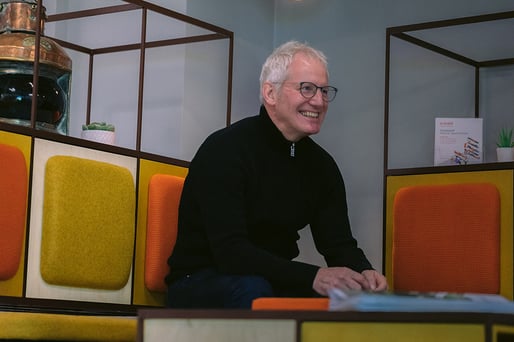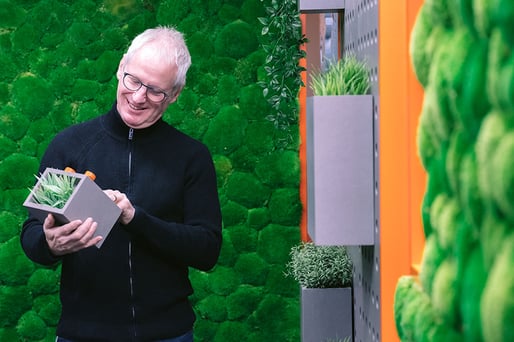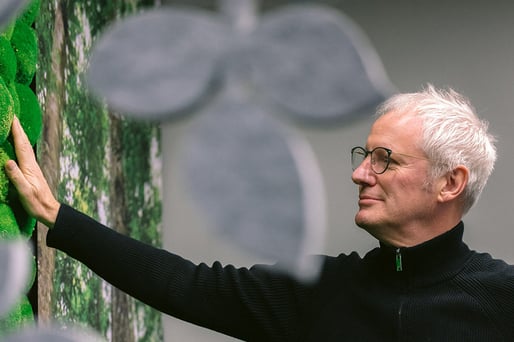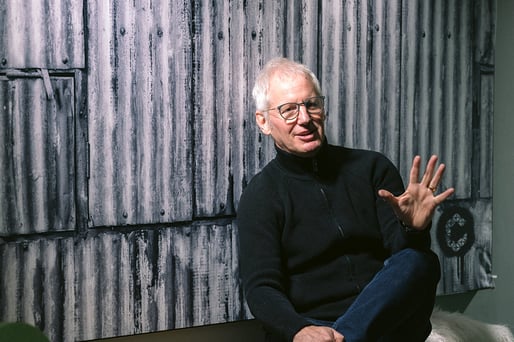|
Jon Tollit is an award-winning Design Director and Principal at Gensler, predominantly working on projects in the lifestyle sector. As a qualified architect and member of the Chartered Society of Designers (amongst others) Jon also plays an important role in nurturing the designers of tomorrow, not just through his work at Gensler, but also as a visiting tutor at institutions across the UK and the US. We caught up with Jon to discuss the shift in architects’ culture, adopting sustainable initiatives, and how he likes to disrupt the status quo. Creatif: According to your Gensler biography, you are “responsible for growing the next generation of designers”. How do you guide those with a passion for architecture and design? Jon Tollit: People are your best asset, so the way you select people to work in your company is critical. Gensler has a great culture, which is why it has grown from a 3-person practice back in 1965, to the 6,500 people that are employed today. The starting point, for me, is about understanding the individual. Discover what makes them tick, get them to express and build upon their capabilities, and find out where their weak spots are so that you can fill in the gaps. It’s also incredibly important to see how they’ll fit into a team of people who will work together and grow organically. Mentoring is a continual process. It’s not about me telling someone what to do; it’s an open dialogue about what they’ve learnt and what they want to learn. Then, you go about guiding them and giving them other opportunities.
You don’t immediately know how people will react. If you give someone too much responsibility right away then they might cave, whereas others in the same position will flourish. I’m there to observe and allow people to find their feet, make mistakes, and then support them as their journey continues. Creatif: What considerations will the ‘architects of tomorrow’ face over the next 10 years? JT: The architectural profession has been questioning itself for a number of years [because] the process of construction has changed. The emphasis has been on speed and economics, which means the process has shifted into ‘design and build’ - reducing time, cost and risk for clients. Therefore, the architect’s role has been undermined by other professions taking pieces of it. Quite often people see the architect as idealists and that we don’t understand the pressures our clients are under, but of course, we are acutely aware of the challenges our clients face. I believe the architects of tomorrow will evolve with technology, using digital techniques that evolve from purely visual to more analytical real-time testing. Environmental concerns are a huge factor for future architects, although the sustainability movement has always been there: I was educated to believe in energy conscious design back in the 70s which is why I adopt a “long life, low energy, loose fit” mantra. Somewhere along the way, sustainability got lost in the sea of consumerism, but it’s now come back with a vengeance, and that mantra is as important now as it was back then. Spaces are becoming multi-use, driven by changes in work, technology and our lifestyles, which is changing the nature of architecture. It’s not about building icons like the Gherkin anymore; it’s about enabling and facilitating people to do their best and be their best in the right environments. Creatif: Can you imagine a world in which architects are no longer needed, because AI will have designed a suitable building instead? JT: Even when I’d just qualified, I remember discussing the issue that architects could become irrelevant, but I actually think it’s a misnomer. AI is a natural progression of technology and it will have an amazing influence on the way we design and produce buildings, but it’s up to us as a profession to embrace and work with it.
Architecture is slow to respond in a way that other industries aren’t. We used to treat buildings as a ‘one off’, which is now changing. We need to learn collectively to the benefit of all. I believe that AI will be helpful as a process in terms of analytics, rather than the aesthetics side. It will enable architects to become more efficient and help us understand the neuroscience of people’s emotions and responses to spaces and places, so ironically it will be technology that allows us to observe and test human behaviour better. The word ‘architect’ and what it actually means will evolve as technology does, but I see people and machines working together collaboratively, rather than one making the other obsolete. Creatif: Do you think it’s ironic that designers and architects create workspaces for other people to thrive in, when they themselves don’t always have the best working environments and are notoriously renowned for working long hours? Do you think architects could be accused of ‘do as I say, not as I do’? JT: That’s a pertinent question, especially as we’ve recently moved offices from Aldgate House, where we’d been for over a decade, [which had become] more restrictive as time went on. Before we moved into the new building, we were in an interim space for two years, which was a great experience. People let go of preconceptions about where they had been, had no preconceptions about what the new space would be like, and so, individuals began working in ways that best suited them. |
When we moved into our new office, we were able to showcase it to our clients as a way to re-purpose an old building and demonstrate social, communal spaces, with no fixed desks, which was a great way of being able to finally practice what we preach. It was no longer something jotted down on paper, but a living breathing organism that clients can experience as they walked round the building. The traditional work culture of architecture is very poor; it almost becomes a stick we beat ourselves with. But that’s unhealthy, unproductive and needs to change. The RIBA is beginning to address aspects such as equality, diversity and wellbeing within the profession, encouraging individuals to share stories and make changes. Awareness of wellbeing and mental health is incredibly important, and long overdue. Creatif: When people have the option to go for alternatives, how do you encourage your clients to adopt sustainable initiatives? JT: It’s something we’re addressing at Gensler by talking openly about it in the office. What I mean by that is it should be discussed at the beginning of every project, rather than a bolt-on nice to have. Lots of practices have their own sustainability specialists which are often not consulted until a design is almost complete, by which point they’re tearing their hair out trying to make environmental changes. Sustainable initiatives need to be raised from day one. Whether we’re talking about it internally or at workshops with clients, it must become embedded into the conversation as a natural part of the process. It’s not about material selection, it’s about implementing sustainable initiatives in a way that makes people operate and live their lives in better way. As humans, we revert to type. Real change will [only] happen when something - such as the tide turning on plastic use - brings a change in mind set. It also requires a change in economic thinking where value and values are aligned more in tune with a longer term and holistic output. Creatif: In another interview you stated that you “believe in disrupting the status quo”. How do you disrupt the status quo? JT: The first thing is to keep an open mind. I’m not overtly disruptive; I really listen to what people say, then consider an alternative route or process which they may not have otherwise considered.
For me, Instagram collages are the worst form of design. Presenting a group of pictures and saying it’s a mood board often ends up with a Frankenstein-like result. If you have no preconception of what something looks like, that’s fine, because it’s about the building solving a problem. Aesthetics shouldn’t limit you or your clients, which I suppose is maybe a non-conformist view for an architect to have. Creatif: In Gensler’s UK Workplace Survey 2016, the results suggested that we need to “match space to role, not status” and “the UK workplace significantly favours those in management positions, [with] 89% of those in senior leadership have private offices. If the ultimate symbol of success used to be ‘the corner office with a great view’, what do you think workers nowadays strive for instead? JT: You’re right, historically the value was placed on square footage rather than what you can achieve in those spaces and this has been a difficult view to change, particularly for more conventional industries where status was more often placed on material items. But people are beginning to see that progression is more about what you can influence, and that your value at work enables you to achieve great things. The more diverse leadership teams are – for example the more women in senior roles – the less it’ll be about corner offices and more about what you bring to the working environment. Creatif: Last year, Fast Company named Gensler one of the 10 Most Innovative Companies in Architecture. Can you explain how Gensler innovates time and time again? JT: The reason I work for them is that they’re not formulaic. Gensler relies on individuals within the practice to come up with creative ideas as there isn’t a pre-set style; you can’t say “oh look, there’s a Gensler project”.
|




